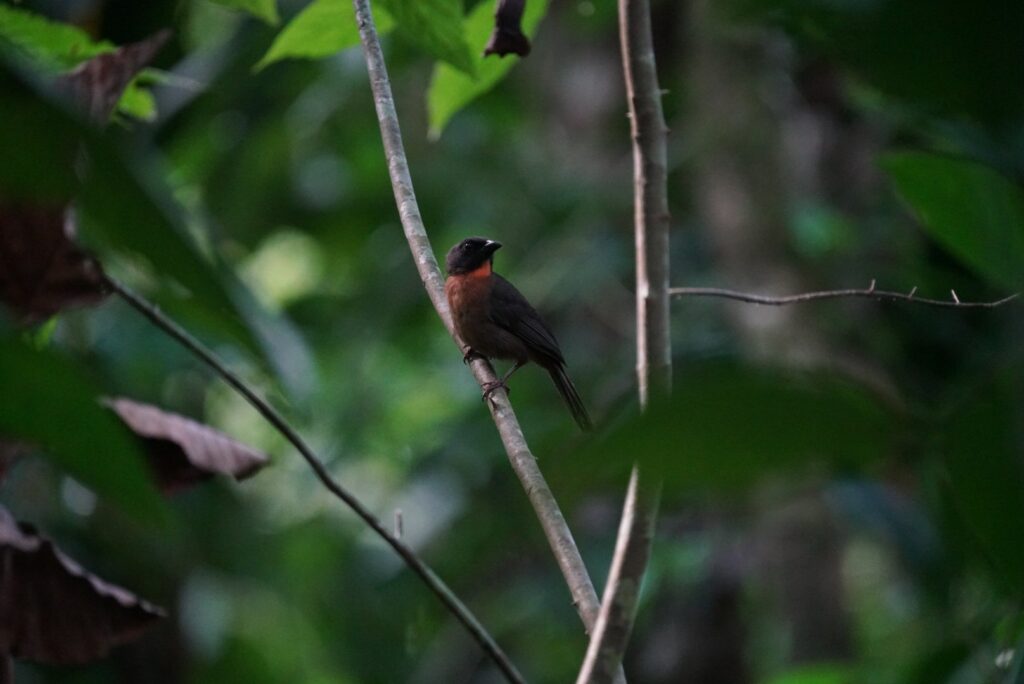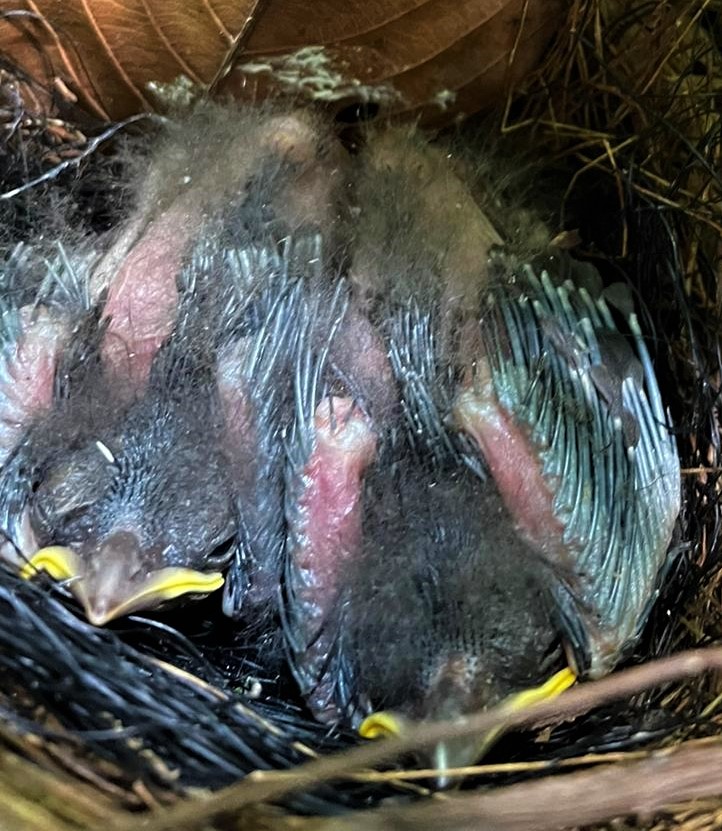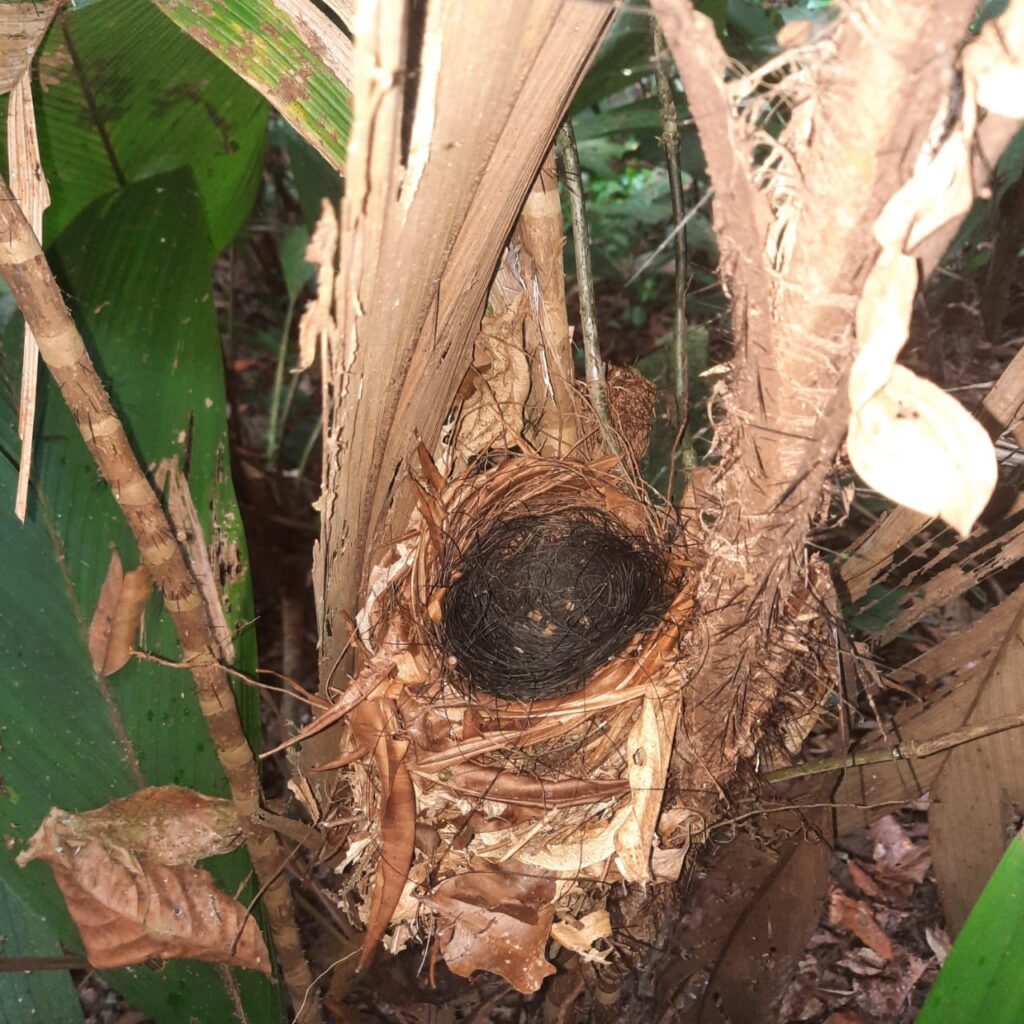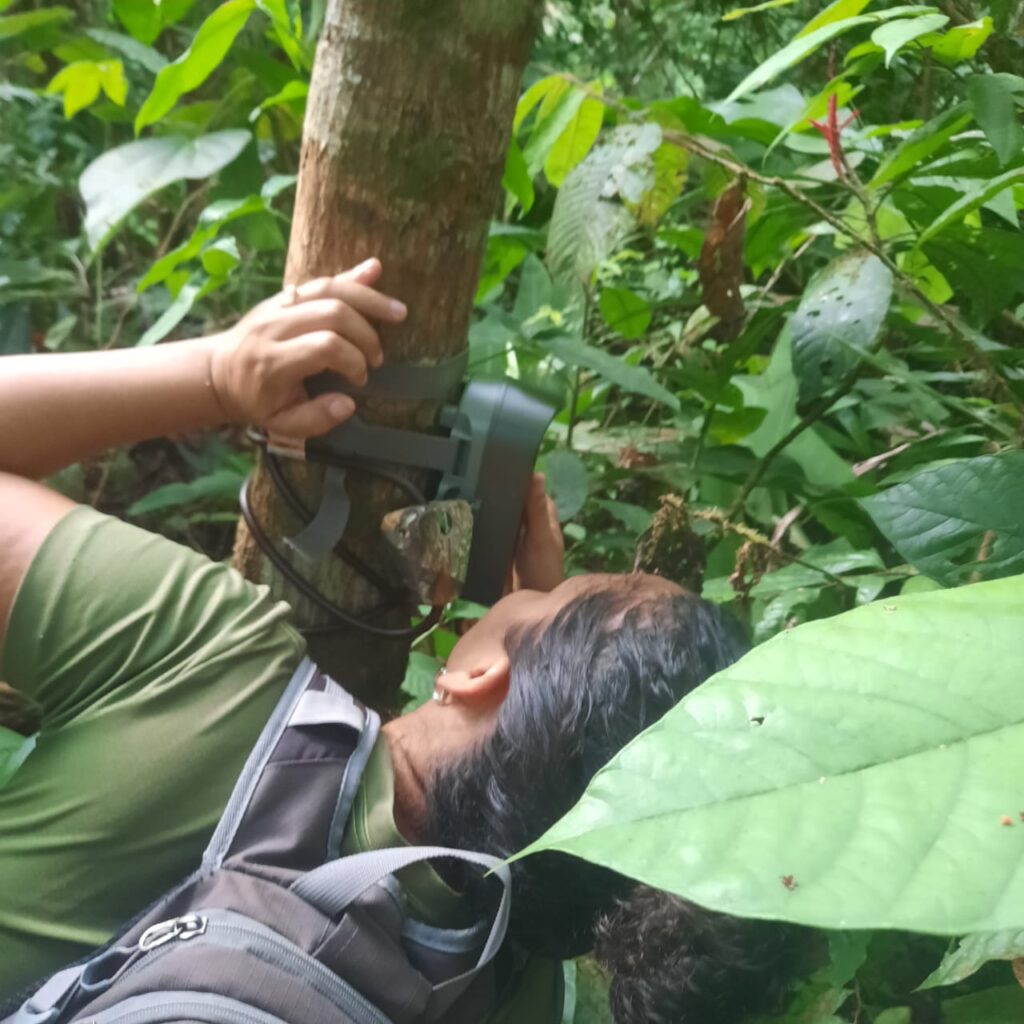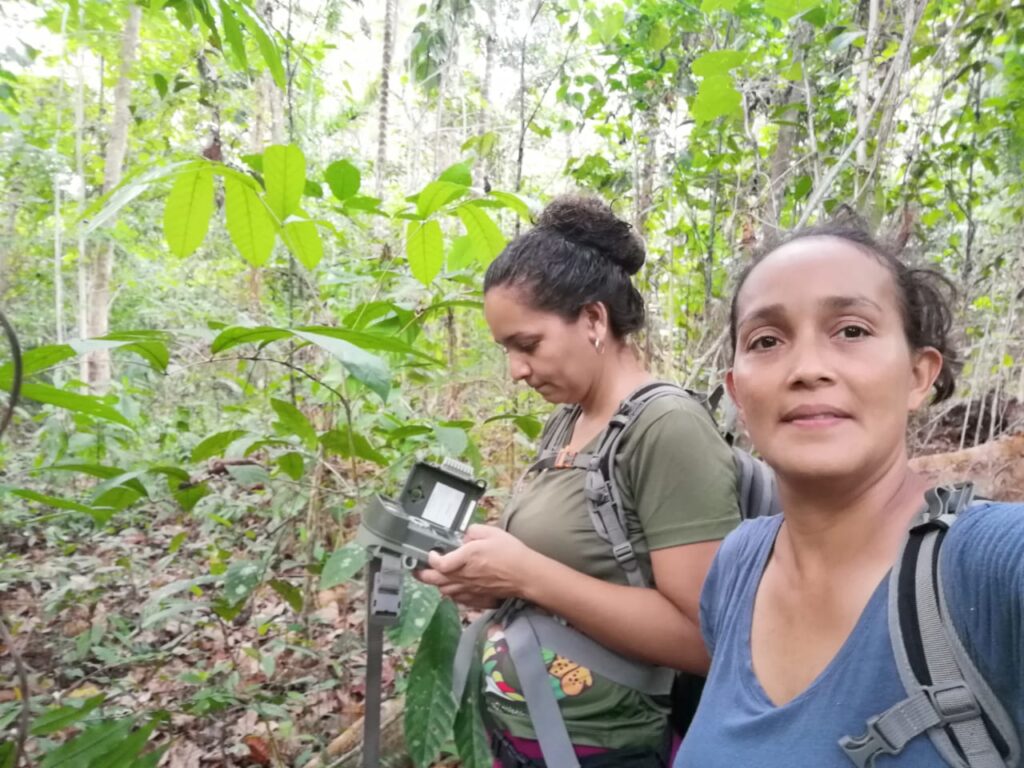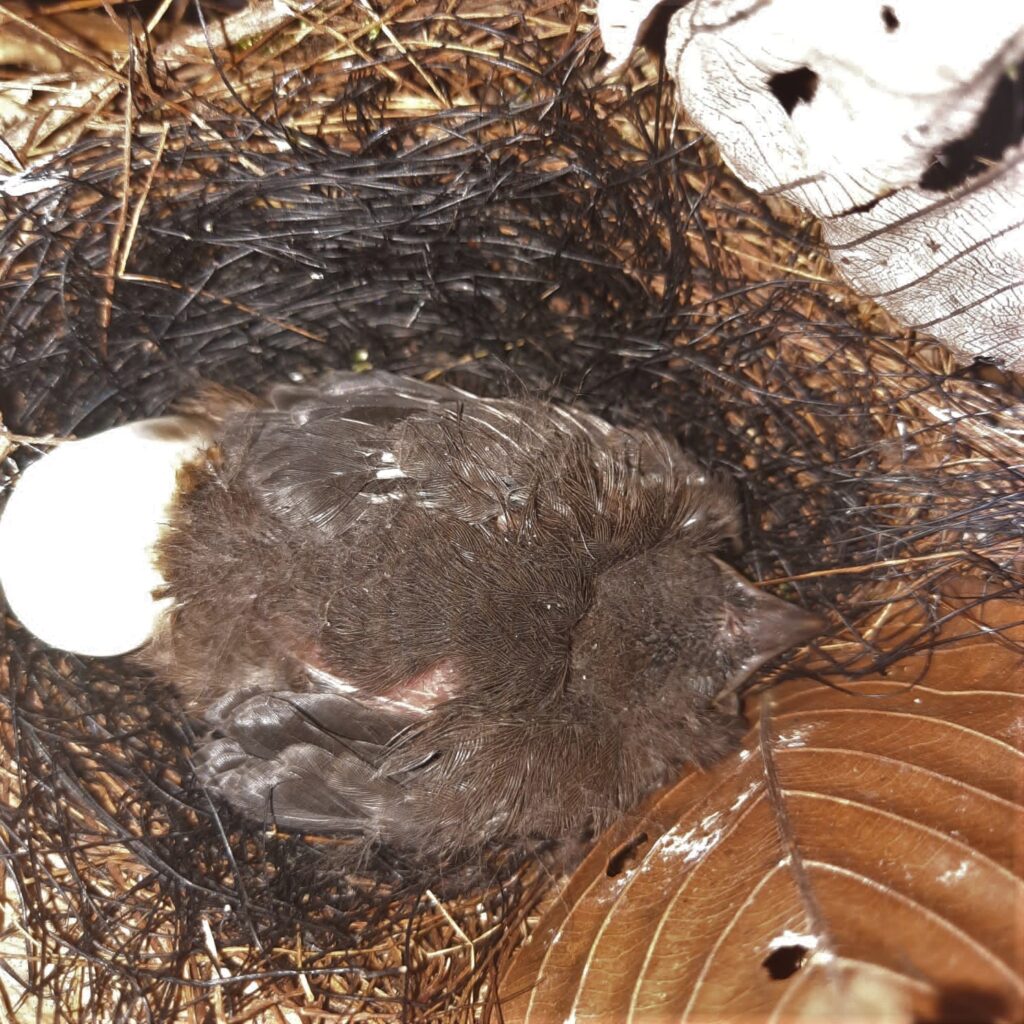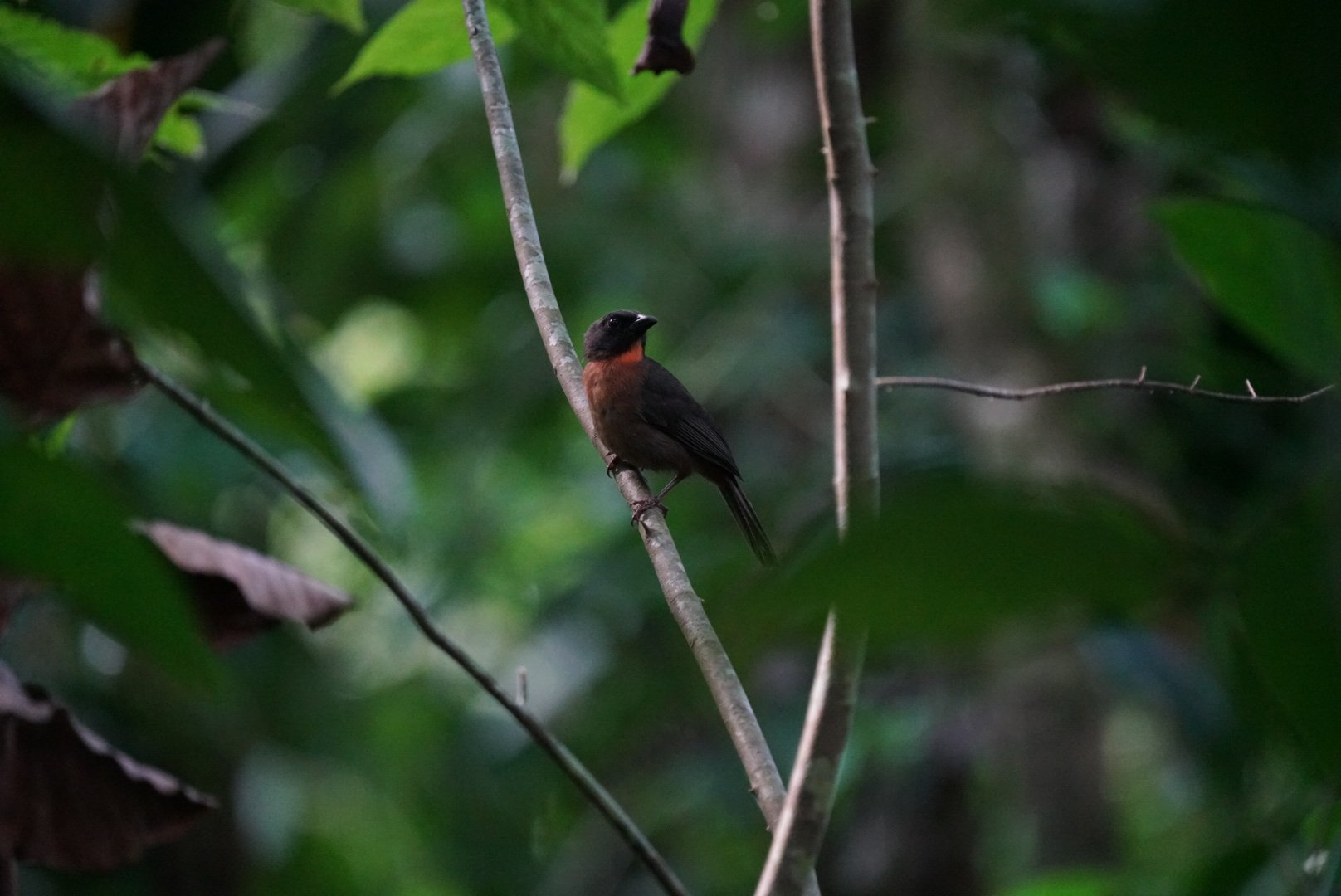
Black-cheeked Ant-Tanager
Reproductive Ecology
Detection and Description of Nest Predation 2022
The Black-cheeked Ant-Tanager (Habia atrimaxillaris) is an endemic bird to the Osa Peninsula and is considered to be a Red-Listed endangered (EN: IUCN) species. A new body of knowledge is in the process of being formed but there is still a lot to do in order to properly mitigate this species decline and manage for its future protection.
With previous research indicating a high depredation rate (>90%) of 22 nests located in 2019 – 2020, we are asking the question why? What are the causes of nest predation and how do we detect it?
With the support of Katie Stumpf PhD from Georgia College, and Karen Leavelle, experts in reproductive ecology and the use of nest cams, the Biological Monitoring Group of Rancho Quemado (specifically Yolanda Rodriguez and Nuria Urena), and Neftali Chavarria of Dos Brazos de Rio Tigre, a community avian monitoring expert, worked with Katie and Karen to place cameras on nests to determine the causes of nest depredation at the two study sites; Dos Brazos and Rancho Quemado.
Project Objectives
- Determine the causes of nest predation with the use of nest cameras, and collect habitat data
- Determine the nest success and associated habitat characteristics of the Black-cheeked Ant-Tanager.
- Provide research opportunities for 2-4 undergraduate and 1 graduate student in biology and environmental science
- Work with stakeholders to develop a Conservation Action Plan
Methods
Nest Cams were placed across two field sites in and around Dos Brazos and Rancho Quemado between December 2021 – April 2022. We placed Bird Cams which primarily work only during the day and are highly sensitive to quick movements allowing for video and photographic capture of birds coming to and from the nest. We also placed a night vision camera to allow for video capture of night movements. A total of 9 nests were located and monitored over the breeding period; 6 nests in Rancho Quemado and 3 nests in Dos Brazos.
Results
We will be sharing our results in the near future (identification of nest predators, habitat information and preliminary data on nest success!
